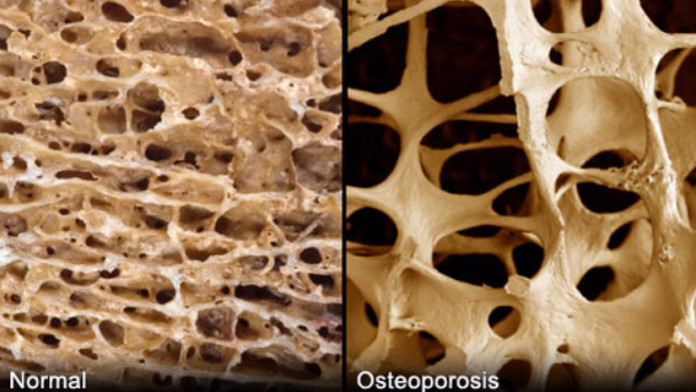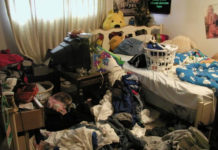Osteoporosis, a bone disorder, can affect anyone of any gender, but it is particularly prevalent in postmenopausal women due to the sudden decrease in protective estrogen levels after menopause.Osteoporosis literally mean ‘porous bones’ that results in reduced bone density and increased fragility of the bones, causing thinning of the bones, combined with the formation of weaker bone crystals, puts people at a higher risk of fractures Facts on Osteoporosis:
Facts on Osteoporosis:
Postmenopausal women are most likely to develop the condition, but it also affects men and younger people across all genders.
 Some risk factors for osteoporosis are modifiable, such as smoking and poor nutrition.
Some risk factors for osteoporosis are modifiable, such as smoking and poor nutrition.
 Osteoporosis is often considered a silent disease as there are no clear outward symptoms caused by the loss of bone density (although bone pain may occur in some people).
Osteoporosis is often considered a silent disease as there are no clear outward symptoms caused by the loss of bone density (although bone pain may occur in some people).
 Fractures are most likely in the spine, hip and wrists.
Fractures are most likely in the spine, hip and wrists.
 Diagnosis is made directly via a special X-ray-based scan, and sometimes through ultrasound.
Diagnosis is made directly via a special X-ray-based scan, and sometimes through ultrasound.
 Treatments include drugs that prevent or slow down bone loss, exercise programs, and dietary adjustments, including extra calcium, magnesium and vitamin D.
Treatments include drugs that prevent or slow down bone loss, exercise programs, and dietary adjustments, including extra calcium, magnesium and vitamin D.
 It is important for people with osteoporosis to take measures to avoid falls so as to reduce the risk of fractures.
It is important for people with osteoporosis to take measures to avoid falls so as to reduce the risk of fractures.
 Causes:
Causes:
Age : Risk increases with age after the mid-30s
Ethnicity : Risk is higher in Caucasians and Asians
Bone structure: Risk is higher in those with small bone structure
Genetics: Risk is higher if there is osteoporosis in the family, especially if a parent or sibling has the disease.
Fracture history: Risk is higher in people with a previous fracture during a low-level injury
Reduced sex hormones, particularly in women (less estrogen after the menopause, for example)
Anorexia nervosa and bulimia (eating disorders), and orthorexia
Smoking
Excessive alcohol intake
Reduced calcium, magnesium and vitamin D status
Inactivity or immobility
Types of Osteoporosis:
Juvenile Osteoporosis: Osteoporosis rarely affects children, but when it does, it’s usually due to a medical condition or medication especially during the child’s bone-building years.
Premenopausal Osteoporosis: While a woman’s risk of developing osteoporosis increases after menopause — premenopausal osteoporosis or bone loss that happens before menopause.
Signs and Symptoms:
 Osteoporosis is a silent disease- It almost often never shows any symptom. A patient may only discover osteoporosis after an unexpected fracture after a minor fall. A strain – or sometimes, even a simple cough or sneeze – may result in a fracture. Typically, breaks occur in the hip, wrist, or in the spinal vertebrae.
Osteoporosis is a silent disease- It almost often never shows any symptom. A patient may only discover osteoporosis after an unexpected fracture after a minor fall. A strain – or sometimes, even a simple cough or sneeze – may result in a fracture. Typically, breaks occur in the hip, wrist, or in the spinal vertebrae.
Diagnosis:
 Osteoporosis may be diagnosed through the use of a bone scan that measures bone mineral density (BMD). X-ray is used for BMD Test, Dual-energy X-ray absorptiometry (DXA) and bone densitometry. In combination with a determination of a patient’s risk factors, DXA offers an indication of the likelihood of fractures occurring due to osteoporosis.
Osteoporosis may be diagnosed through the use of a bone scan that measures bone mineral density (BMD). X-ray is used for BMD Test, Dual-energy X-ray absorptiometry (DXA) and bone densitometry. In combination with a determination of a patient’s risk factors, DXA offers an indication of the likelihood of fractures occurring due to osteoporosis.
The results of the bone mineral density test are given as:
DXA T-score; -1.0 or above is considered normal,
DXA T-score between -1.0 and -2.5 represents mild bone loss.
By:Archa Dave




























